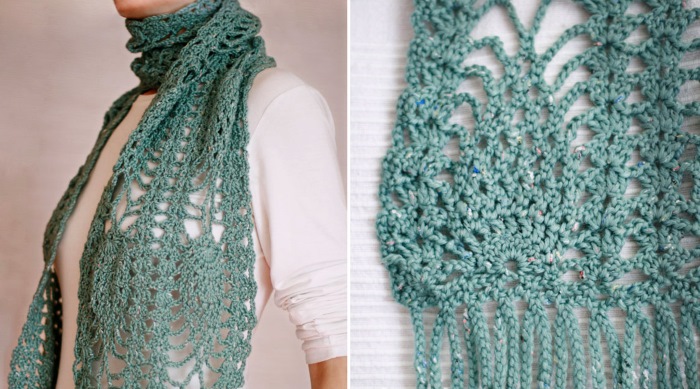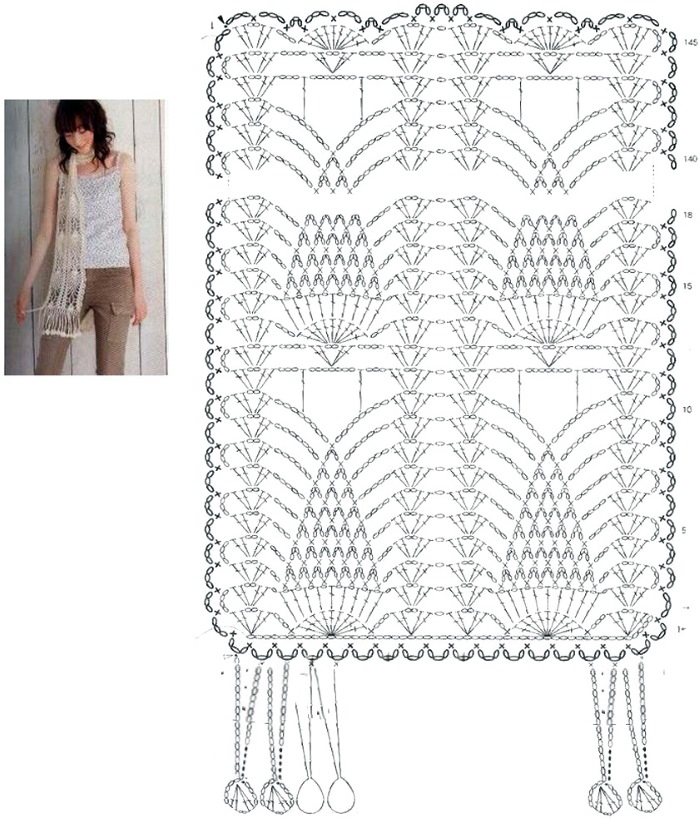For many people, a snood or scarf has become an indispensable thing in winter. They allow you to warm up on cold days and can decorate your image. Since both the scarf and the snood are straight fabric, they are often knitted independently. Using crochet patterns for scarf, you can knit a beautiful and bright accessory that complements your look.
Choosing yarn and hook
When choosing yarn, you need to focus on the composition of the thread. So, for winter scarves, it is recommended to choose semi-woolen and thick woolen threads. It is important to consider that the threads should be pleasant to the touch. To understand whether the thread is suitable for work, you can put a skein of yarn to your cheek.
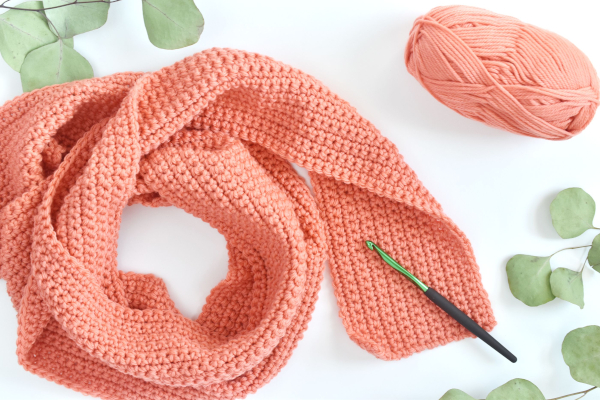
The yarn should also not shrink when washed, should not fade. Therefore, when buying yarn, you need to focus on these parameters. Mixtures of acrylic, viscose and wool threads are considered easy to wash. They also do not fade or lose their shape. The fiber mixture should not contain more than 20% synthetic material.
For scarves for autumn and winter, it is recommended to select the following types of yarn:
- fleece;
- angora;
- mohair;
- alpaca;
- merino;
- cashmere;
- acrylic;
- wool mixture
Since a snood is a headdress that is often worn in winter, it should be knitted from thick and warm yarn. Craftswomen often knit snoods for winter from wool.
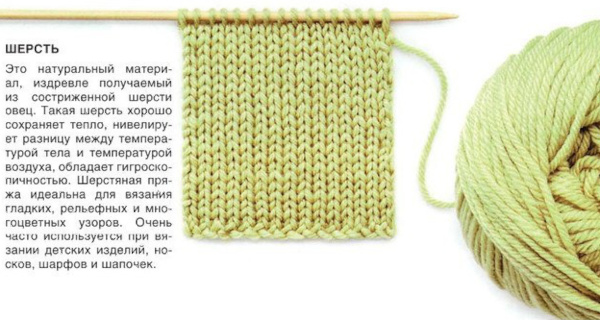
- Sheep wool — the most popular type of yarn for making scarves. It is also considered inexpensive. To avoid discomfort when wearing, do not use yarn that is 100% sheep wool. To ensure that the product can be worn without problems, you can buy threads consisting of wool and acrylic.
- Merino wool — high-quality thread. It is thin and pleasant to the touch, but it is expensive. At the same time, a snood knitted from such wool does not irritate the skin and warms in winter.
- Alpaca — an expensive material for making snoods. Yarn made from llama wool is warm, strong, and snoods made from such wool do not pill.
- Mohair — yarn made from goat wool. It is very fluffy and quite thin. Since mohair would delaminate without a mixture of other materials, a small percentage of other materials, such as acrylic, is always added to it. The disadvantage of this type of yarn is the abundance of fluff that can get into the nose or mouth.
- Angora — yarn made from angora rabbit down. Pure yarn consisting only of angora is not produced. Despite the fact that a rabbit down snood is very warm and light, it is difficult to care for. Thus, it cannot be washed by hand, it can only be dry-cleaned. For this reason, angora is very rarely used for snoods.
- Cashmere — yarn from the down of Tibetan goats. Cashmere yarn is the most expensive, works from it are light and thin. Such snoods are often given for holidays.

When choosing yarn, it is necessary to take into account the features of the style. Both the snood and the scarf can be knitted with simple patterns. The snood is a straight piece of fabric sewn into a ring. It can be knitted with a different number of turns around the neck.
Snoods are knitted from yarn consisting of wool and acrylic. Since it is used as a headdress, you need to take yarn of medium thickness. A product made of thick yarn will be too heavy and uncomfortable. The wool in the threads for a snood should not be more than 50%.
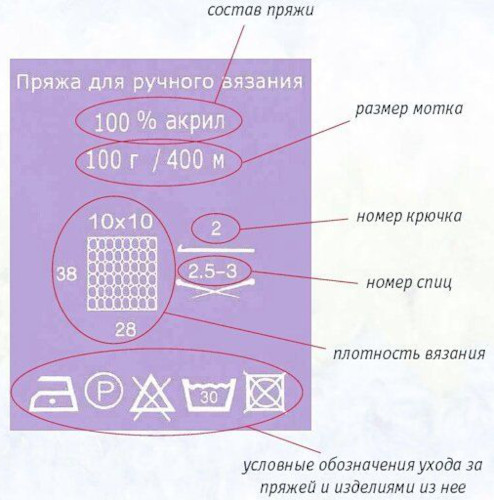
Often all the information about which hook goes with the selected yarn is contained on the skein label. If the label is lost, you can select a hook for the yarn as follows.
You need to insert a thread of yarn into the hook notch. If it falls out or does not cover the hook, you need to select a hook of a different size.
The hook and yarn match if the yarn does not completely cover the hook.
Hooks are made from various materials. Plastic hooks are considered the cheapest. Their disadvantage is fragility, they often break when knitting. Wooden hooks are pleasant to the touch, the yarn slides well on them if they were made correctly. However, they can easily break and are often quite expensive.

Aluminum hooks are stronger than plastic and wooden ones. The yarn slides well on the hook during work. It is inexpensive and almost never breaks. However, thin hooks can bend or slip out of your hands during knitting.
The steel hook is considered the most durable, does not bend or break. The thread also slides easily along it during knitting. The disadvantages include the high price.
The hook handle can be wooden or plastic, and the tip can be made of metal. The handle can be made both curved and straight. If the hook is made poorly, the handle can fall off the tip.
List of abbreviations in descriptions
In all descriptions of knitting patterns of scarves, abbreviations of the main elements are used for convenience.

These include:
- SC - single crochet;
- VP - air loop;
- ССН — double crochet;
- SS - slip stitch
Simple pattern
Crochet patterns for a scarf, the schemes of which are used by almost all craftswomen, help to quickly knit a beautiful wardrobe item that will keep you warm in winter.

The simplest pattern for knitting snoods and scarves is considered to be a straight fabric made of CCH. To make the scarf brighter and more beautiful, you can change the color of the threads used in the work. To change the color of the thread, you need to tie the ends of the threads together in a knot. The ends of the threads can be carefully hidden in the fabric.
In addition, simple patterns are popular among beginner knitters. A piece made with one type of stitch helps inexperienced needlewomen avoid making mistakes and quickly complete the work.
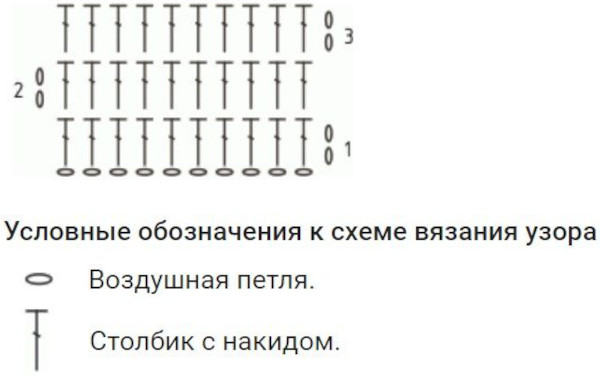
A simple crochet pattern for a scarf can be described as follows:
- Knit 3-4 rows in width VP.
- Continue knitting, alternating VP and CCH.
- Knit the same number of rows as the length of the finished product.
- Shut down the VP.
Openwork pattern
An openwork scarf can be a good gift for a girl. There are openwork patterns of varying degrees of complexity.
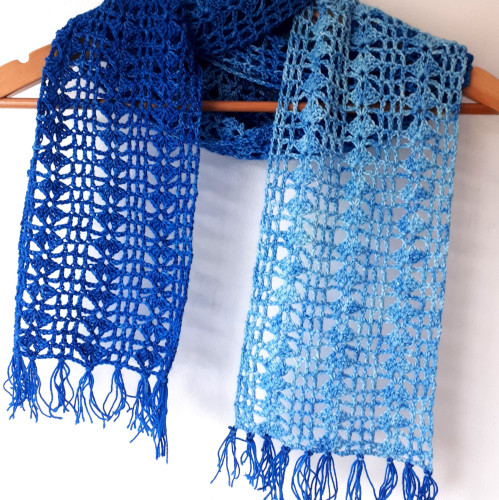
- Based on the desired width of the scarf, make a chain of VP.
- In the 1st row, start knitting with 3 CCH in the 8th loop from the hook.
- Make 2 VP, knit 3 DC again in the same loop where the previous DC were knitted.
- Knit 1 VP. Skip 3 loops.
- In the 4th loop knit 1 CCH, 1 VP.
- Skip 3 loops, knit 3 DC into the next VP.
- Knit 2 VP, then 3 CCH in the same VP.
- Knit 1 stitch, skip 3 stitches, make 1 dc in next stitch.
- Repeat steps from step 5 until the end of the row.
- Form 4 VP, skip 1 loop, 3 CCH.
- In 1 arch from VP knit 3 DC. In the same arch knit 2 VP and 3 DC.
- Skip 1 VP, tie a DC into the DC of the previous row.
- In the arch of 2 loops knit 3 DC. In the same arch knit 2 VP and 3 DC.
- Knit 1 dc into the column of the previous row.
- Repeat the steps from step 12 to the end of the row. Finish the row with a CCH in the 3rd lifting loop.
- To finish the scarf, continue all the steps starting from step 12.
Large openwork pattern
Crochet patterns for scarves, the schemes of which can be both flat and voluminous, vary depending on the size of the pattern.
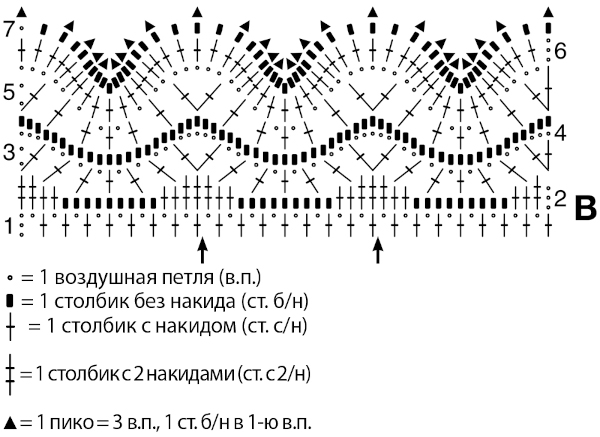
To knit a scarf with a large openwork pattern, you will need:
- Make a starting chain of 47 VP.
- In the 1st row, cast on 3 lifting VP, 1 more loop, in the 7th loop from the hook, knit a CCH.
- Using crossed stitches, crochet a dc into the 5th loop from the hook. The next crossing of stitches is as follows: in the 3rd loop from the hook - dc, ch, then - in the 2nd loop to the right of the crocheted stitch, crochet a dc. Finishing the row, ch and crochet a dc into the last loop.
- In the 2nd row, start knitting large cones. Before the cone, 4 VP should be knitted, after the cone, 2 VP should be knitted.
- The cone itself is knitted as follows: The thread is thrown onto the hook, the hook itself must be inserted into the loop between the crossed columns in the previous row and pulled out, forming a long loop. This action is repeated 8 times. After this, you need to tighten the yarn over, pull the thread through 8 loops, make another yarn over and knit the last 2 loops.
- At the end of the row you need to knit a bobble, VP and in the last loop – CCH.
- Cast on 4 VP, then in the arch after the cone knit a dc, VP, repeat dc in the arch after the next cone. At the end of the row - VP and dc.
- Continue knitting, alternating rows with bobbles and CCH.
- To decorate the ends of the scarf, you can make pom-poms by connecting them to the scarf with a double thread.
Original pattern
You can knit a scarf with an original pattern – fans – from thick yarn. It is important that this yarn is not only thick, but also does not prick the body when wearing the finished product.

- In the 1st row, in the 6th loop from the hook, knit a fan of DC, in the 4th loop from the fan, make a SS, skip 4 loops. Continue knitting fans and SS, finish the row with a SC.
- In the 2nd row, knit 4 lifting VP and 2 SC in 1 loop of the previous row. Then knit the following pattern 3 times: 3 VP, in the 5th fan loop - DC, 3 VP. In the SC of the previous row, knit a column with 2 yarns, 2 VP, a column with 2 yarns. At the end of the row, between 2 DC, you need to knit one VP.
- At the beginning of the 3rd row, you need to dial 3 lifting loops and in the same loop at the base, tie 4 DC. Then repeat the following combination 2 times: in the SC, tie a SC, in the arch of 2 VP, tie 9 double crochets. The row ends with 5 DC.
- To complete the work, alternate rows, starting with row 2. When the desired length is reached, cut the thread and decorate the ends with fringe.
Unusual pattern
Crochet patterns for a scarf, schemes can help in creating an unusual accessory. For example, using yarn of autumn colors, you can knit a scarf consisting of many small rings. The knitting density can be any.

- Knitting begins with a thread ring. It needs to be tied with 15 dc and closed into a ring with 1 ss.
- In the 2nd row, knit 3 VP, knit dc in 1 dc. In the following rows, knit 2 dc and close the work with ss.
- You can knit 148 circles this way - for example, 15 yellow, 12 dark brown, 100 red, 10 light brown and 11 orange.
- Place 2 circles in row 1, 4 circles in row 2, 5 circles in row 3 and 4 respectively, and increase the number of circles to 6 circles in row 5. Repeat the number of circles from rows 3–5 8 times.
- In rows 27–28, lay out 5 circles. In row 29, lay out 3 circles. In row 30, lay out only 1 circle.
- The circles are sewn together according to the scheme: 1 circle with 6, 11 with 16, and so on. It is important to form hexagons. The circles can be not sewn together, but connected with connecting posts in the last row.
Children's models
Crochet patterns for a scarf, the schemes of which are made for adults, can also be suitable for children. Many children like snoods and scarves in the form of animals, so you can knit a snood with ears.

It is knitted according to the following description:
- You need to start working with a chain of VP. When the chain is of the required length, close it into a circle.
- Knit a single crochet stitch into each stitch. Knit the required number of rows (depending on the child’s height) in this manner.
- The snood is finished with a pink thread of sc.
The ears are knitted separately according to the description:
- Form a ring of 3 pink loops on the hook.
- In the 1st row, knit 7 sc, connect them into a ring.
- In the 2nd row, knit 14 columns, forming 2 columns from each column of the previous row.
- In the 3rd row, increase the number of columns to 21, knitting SC in 1 column, in the 2nd column knit 2 SC. Continue alternating until the end of the row.
- Row 4 consists of 28 columns. You need to alternate the columns in this way: in the 1 column of the previous row, knit 1 sc, in the 2nd and 3rd columns, knit 2 sc. Repeat the alternation until the end of the row.
- The last rows consist of gray threads. Row 5 consists of 35 columns. In 1 column tie 1 sc, in the next 3 - 2 sc. Continue alternating 6 more times.
- The number of columns in the 6th row increases to 42. In this row, 1 sc is knitted into the column of the previous row, and in the next 4 rows - 2 sc.
- In the first 8 columns, knit according to SC.
- Fasten the pink and gray parts of the ears together. Attach the finished parts to the snood.
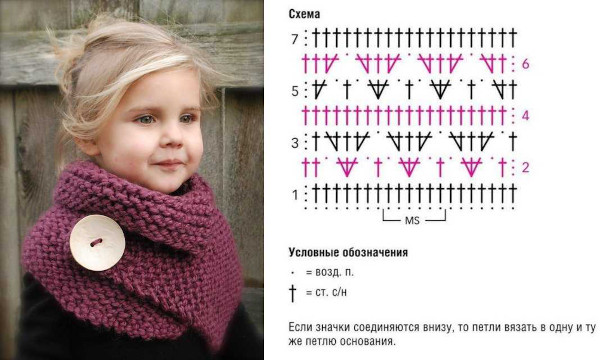
A simpler and faster option to knit a scarf for a girl is a fabric made of DC and VP. To make the scarf openwork and delicate, you can alternate loops and columns in rows. For example, in the 2nd row you can knit only DC, and in the next row alternate DC and VP.
A pre-crocheted flower can be sewn onto the finished fabric. It can consist of loops closed into a ring. 1 flower petal consists of 3 VP, 3 CCH, 3 VP. They are connected to the ring using SS.
Thus, by correctly selecting patterns for knitting a crochet scarf, you can knit a bright and unusual gift. The scarf will suit not only an adult, but also a child. For children, you can knit snoods decorated with ears, small paws.
Video about patterns for scarves and snoods crochet
Gorgeous crochet scarf in a couple of hours:

